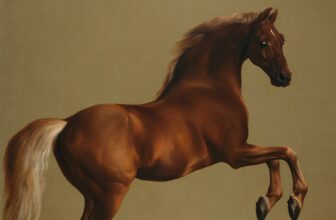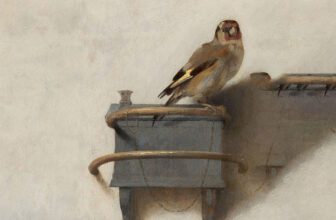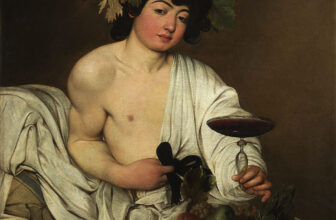
A Timeless Tale in Paint: St. George and the Dragon by Raphael
The painting “St. George and the Dragon” by Raphael is one of the most celebrated artistic renditions of the legendary tale of bravery, sacrifice, and divine virtue. Created during the early 16th century, this masterpiece embodies the Renaissance ideals of heroism, chivalry, and spiritual triumph. Raphael, born Raffaello Sanzio da Urbino, was a master of High Renaissance art, and his version of this mythical battle has captured the imagination of generations. But what makes this painting so compelling? Who was the artist behind it? What meaning does the painting hold, and why did Raphael choose this particular subject? Let us delve deep into the painting’s artistic, cultural, and historical layers.
Who Painted St. George and the Dragon?
“St. George and the Dragon” was painted by Raphael, one of the most revered artists of the Italian Renaissance. Raphael was born in 1483 in Urbino, Italy, and was the son of Giovanni Santi, a court painter. Trained in the artistic traditions of the time, Raphael quickly rose to prominence with his impeccable skills in composition, color, and human anatomy. Alongside contemporaries like Leonardo da Vinci and Michelangelo, Raphael is considered part of the holy trinity of Renaissance art.
Raphael’s style was characterized by its clarity, balance, and grace, often emphasizing the harmony between figures and their surrounding spaces. This talent is particularly evident in “St. George and the Dragon,” where dynamic action is frozen in a moment of perfect compositional balance. His ability to blend narrative storytelling with idealized beauty made him a favorite among popes, nobles, and patrons across Europe.
The Meaning of St. George and the Dragon
The story of St. George and the dragon is a Christian legend that originated in the Middle Ages and became a popular motif in Western art and literature. The tale involves St. George, a Roman soldier and Christian martyr, who rescues a princess by slaying a ferocious dragon that has been terrorizing a town. Symbolically, the story represents the triumph of good over evil, faith over fear, and divine intervention over worldly chaos.
In Raphael’s painting, these themes are elegantly conveyed through the composition and symbolism. St. George is shown mounted on a white horse, mid-action, spearing the dragon beneath him. His armor glistens, his lance is precise, and his expression is one of focused determination. In the background, the princess can be seen kneeling in prayer, signifying purity and divine providence. The dragon, dark and menacing, embodies evil, chaos, and paganism.
Raphael’s depiction goes beyond a mere literal representation. The painting invites viewers to contemplate the inner battle between virtue and vice, courage and cowardice. The saint’s calm demeanor and the controlled energy of his posture emphasize the divine source of his strength. It is not merely the physical act of slaying the dragon that is highlighted, but the spiritual fortitude behind it.
Why Did Raphael Paint St. George and the Dragon?
The exact reason why Raphael painted this particular scene is rooted in both artistic tradition and patronage. During the Renaissance, tales of saints and biblical heroes were common subjects, especially in commissioned works intended for private devotion or as symbols of familial honor.
“St. George and the Dragon” was likely commissioned by Guidobaldo da Montefeltro, Duke of Urbino, or possibly by another noble patron with chivalric and religious inclinations. The Montefeltro family were known supporters of the arts and had deep connections to the legend of St. George. In fact, St. George was often regarded as a patron of knights and noble families. The painting might have served as an emblem of virtue, courage, and piety, qualities that noble patrons wanted to be associated with.
Additionally, Raphael’s early works often explored themes of heroism and Christian virtue, aligning with both his personal religious beliefs and the cultural values of his time. This painting, then, can be seen as a reflection of both the artist’s moral ideals and the societal emphasis on chivalric values.
What’s Happening in Raphael’s St. George and the Dragon
In this masterpiece, we witness a dynamic moment suspended in time: the brave knight George atop his rearing white horse, plunging his spear into the writhing dragon, as a princess looks on from a distance. But what exactly is happening in this dramatic tableau?
The scene illustrates the popular legend of Saint George, a Roman soldier and Christian martyr who, according to medieval lore, saved a town terrorized by a monstrous dragon. In the story, the dragon demanded daily human sacrifices, and when the princess was chosen, George appeared, confronted the beast, and slew it , all to rescue the innocent and prove the triumph of faith and virtue over evil.
Raphael captures this climactic battle with stunning clarity and precision. St. George, clad in shimmering armor, is the embodiment of courage. His spear pierces the dragon at just the right angle, a moment of divine justice rendered with almost surgical elegance. The dragon, a coiled and clawed symbol of chaos, writhes in pain, a last gasp before defeat. In the background, the rescued princess stands not in horror, but in prayerful awe , a testament to George’s righteous power.
But beyond the visual spectacle, the painting is also a symbolic narrative. George represents the Christian knight, fighting not just literal monsters, but the metaphorical dragons of sin, fear, and tyranny. The dragon itself is a centuries-old symbol of evil, and in Renaissance art, its defeat often spoke to contemporary religious and moral ideals. Raphael’s interpretation, though small in size, packs immense spiritual and philosophical weight.
What Does the Dragon Represent in St. George?
The dragon in the legend of St. George has been interpreted in various ways throughout history, depending on the context. In Raphael’s painting, the dragon is more than just a fantastical creature; it is a powerful symbol of evil, sin, and the chaos that threatens divine order.
In Christian iconography, dragons often symbolize Satan or the embodiment of demonic forces. Thus, the act of St. George slaying the dragon is akin to the spiritual triumph of good over evil. The dragon’s dark tones, sharp claws, and grotesque form stand in stark contrast to the shining armor and noble form of the saint.
Furthermore, the dragon can be seen as a representation of earthly temptations, paganism, or the corrupting influence of power and fear. St. George’s victory is not only a physical conquest but a moral and spiritual one. By conquering the dragon, he restores peace and order, reinforcing the message that divine faith and moral integrity can overcome even the darkest threats.
Size of the Painting
Raphael’s “St. George and the Dragon” is a relatively small painting, especially when compared to other grand works of the Renaissance. The dimensions of the painting are approximately 28.5 cm × 21.5 cm (11.2 in × 8.5 in). Despite its modest size, the painting is rich in detail, energy, and symbolic depth. Its small scale suggests it may have been intended for personal devotion or as a private collectible rather than a large public display.
This intimate size enhances the painting’s role as a contemplative object. Viewers are encouraged to closely engage with the intricate brushwork, the careful composition, and the emotional intensity captured in such a condensed format. It is a testament to Raphael’s genius that he could encapsulate such a powerful narrative within a limited canvas.
Where is the Painting St George and the dragon Displayed?
Today, Raphael’s “St. George and the Dragon” is housed in the National Gallery of Art in Washington, D.C. It is part of the gallery’s Samuel H. Kress Collection, which includes several significant works from the Italian Renaissance. The painting is displayed alongside other masterpieces from the period, allowing viewers to appreciate it within the broader context of Renaissance art.
The National Gallery of Art offers the perfect setting for such a work, with its dedication to preserving and presenting world-class art to the public. Visitors to the gallery can see the painting up close, experiencing the fine detail and narrative power that make it a jewel of Raphael’s early career.
“St. George and the Dragon” by Raphael is far more than a simple depiction of a mythological event. It is a profound visual narrative that embodies the Renaissance ideals of harmony, valor, and divine grace. Through his masterful use of color, form, and symbolism, Raphael has created a timeless piece that continues to resonate with viewers centuries after its creation.
The painting’s significance lies not just in its aesthetic appeal but in the rich layers of meaning it conveys, personal virtue, religious devotion, and the eternal battle between good and evil. Whether viewed as a religious icon, a historical artifact, or a work of artistic genius, Raphael’s “St. George and the Dragon” remains an enduring symbol of courage and faith in the face of adversity.
As we stand before this painting in the gallery, we are reminded that the story of St. George is not confined to legend. It is a universal allegory, brought to life by Raphael’s brush, that continues to inspire the eternal human quest for righteousness and transcendence.




